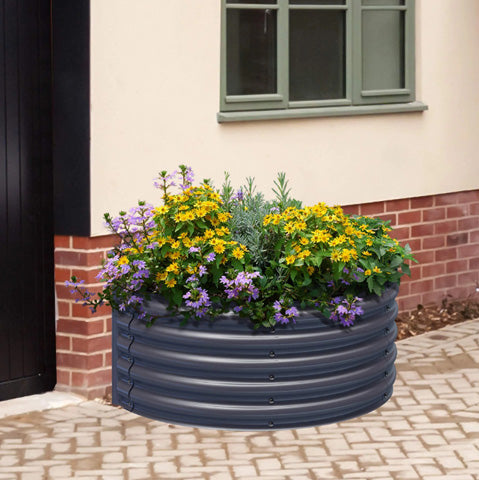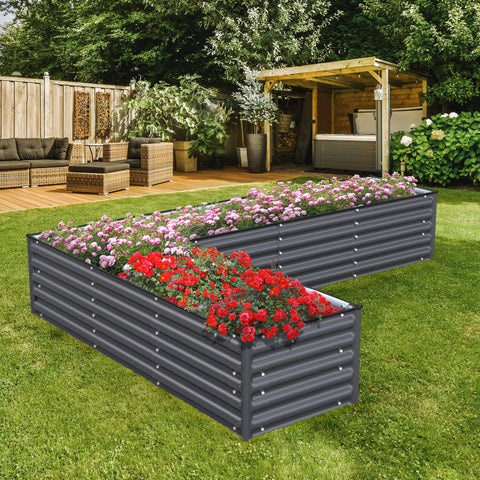Tips from Olle Garden Bed: When Will Your Roses Bloom?
Although roses bloom in other seasons, the best time for many varieties to bloom is late spring and early summer. At this time of the year, the temperature is milder than the hot summer, and the rainfall is usually more. The ever-changing climate creates ideal conditions for roses to truly shine. Read here are some things that you should know when It comes to Olle Garden Beds!
But that doesn't mean you can't enjoy roses all year round!
Some varieties of roses, such as hybrid tea roses, actually survive in a warm winter climate and continue to bloom throughout the year. But be aware that frost and temperatures below 30 degrees Fahrenheit will kill your flowers. Some examples of hybrid tea roses are "Olympia", "Brigadoon" and "Garden Party".

A word about flowering cycle
Speaking of roses, time is everything. Knowing when your roses will bloom may be a challenge, but with a little knowledge and patience, you can enjoy the beautiful flowers all summer! To help you achieve this goal, the following is an overview of the blooming cycle of roses.
First cycle
The first flowering cycle starts in early spring after winter pruning. This cycle usually lasts about six weeks on average, but some varieties may only bloom for a few days or up to two weeks.
Please note that the first cycle is difficult to time, because the frost will affect the roses. The next cycle is easier to calculate, so you will know exactly when your roses will bloom.
Make display
If you are planning a special occasion, such as a wedding, and want your roses to bloom on that date, please try to cut them off seven to eight weeks ago. This allows enough time for roses to regenerate and reach the peak beauty in time before the big day. Monitor these calendars and note the dates. This may mean the difference between amazing flower displays or withered petals!
Blooming in all seasons
In order to bloom in the whole season, you need to plant varieties that bloom at different times. In this way, at least one rose will bloom at any time of the year.
By understanding the flowering cycle, you can maximize the beauty of the garden in many months of the year.
Achieve maximum flowering
It is important to know how to take care of plants to achieve blooming. With the right technology, you can also turn the simplest rose bush into a spectacular performance!
Choose the type of rose suitable for your landscape and climate
When selecting roses, please consider whether you want potted plants, shrubs or climbing varieties, and which ones are most suitable for your local temperature range.
For example, if you live in a cold winter climate, you will need to find cold-resistant varieties that can withstand colder temperatures than normal. Some examples are "John Cabot" or "Frontenac".
When and where to plant
Once you have selected the right type of roses for your garden, it is time to decide when and where to plant them. If you have bare-rooted roses, please plant them from the end of winter to early spring or late autumn, while the plants are still dormant. Just make sure the ground is not frozen! We plant roses in flowerpots all year round.
Roses need at least four hours of sunshine every day. If you plant them away from windy places, they will thrive. Give them enough space, at least 2 feet. In this way, they can absorb sunlight without competing for resources.
Plant
When planting roses, dig a hole twice larger than the root to have enough room for growth. Add a few shovels of compost or aged dung at the bottom of the hole and mix it into the existing soil. Now common fertilizer is applied and cultivated in the soil. Put the rose bush into the hole and fill its surroundings with the remaining soil. Lightly pack to remove air pockets, and thoroughly water at least once a week after planting.
Watering
Roses need to be watered regularly throughout the growing season, usually one inch or more a week during extreme high temperatures. To measure when it is needed, check the soil around the bottom of the plant. If it is dry one inch below the surface, your rose needs some H2O!
Trim
Before the new growth begins, prune at the end of winter or early spring to loosen dead trees, cross branches and diseased leaves.
Also remove the suckers growing under the combination of buds at the base of the plant. Trim the back branch about one third of its length and cut it at an angle just above the outward bud.

Feed
Feed roses with general fertilizer twice a year. Select one specially prepared for roses and follow the manufacturer's instructions on the package.
Dead corner
Death encourages new growth and helps keep your roses in their best condition throughout the season. To die, just use clean and sharp gardening scissors or scissors to cut off the place where the flowers meet the stems.
Pest control
Roses are vulnerable to various pests and diseases, such as aphids and mites. Watch for signs such as yellow leaves and webbing. Regularly check the plants and immediately remove the branches with diseases or insects. Use pesticides if necessary.
Oh, what a rose!
If you are a rose lover, the best time for roses to bloom is spring and early summer. However, for those who live in a mild and warm winter climate, some varieties of roses survive and even continue to bloom all year round. Therefore, no matter what season you like now, take care of your rose bush, which will bring joy all year round!
